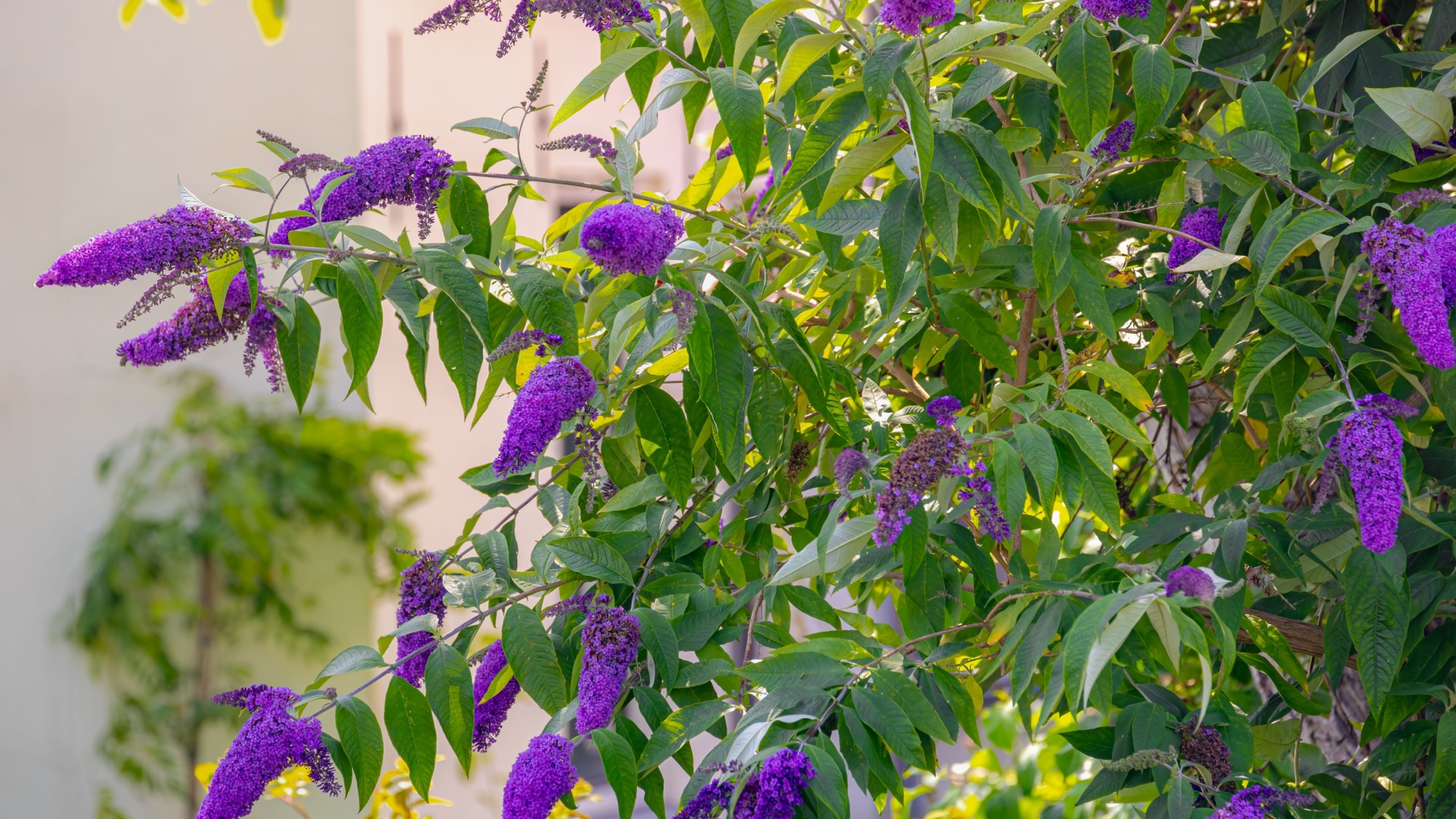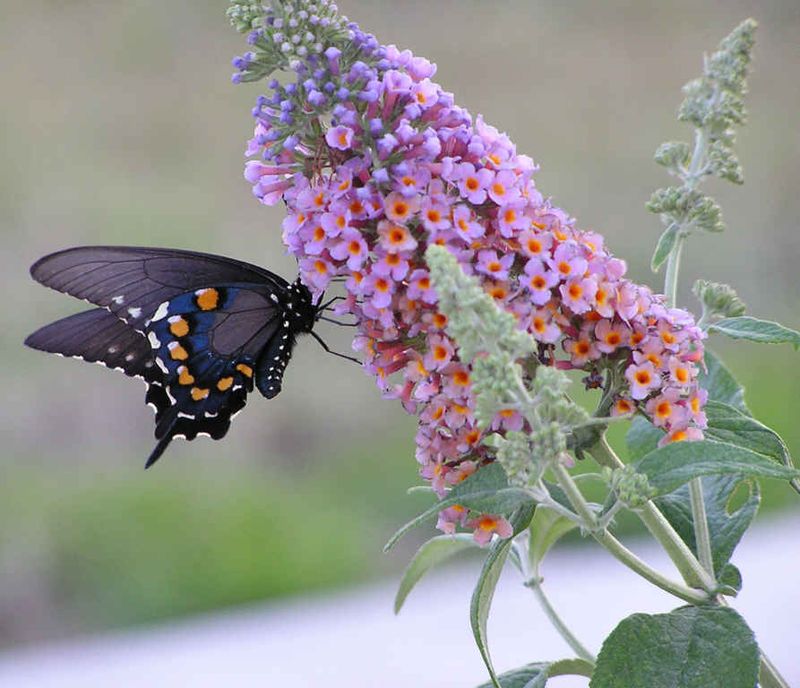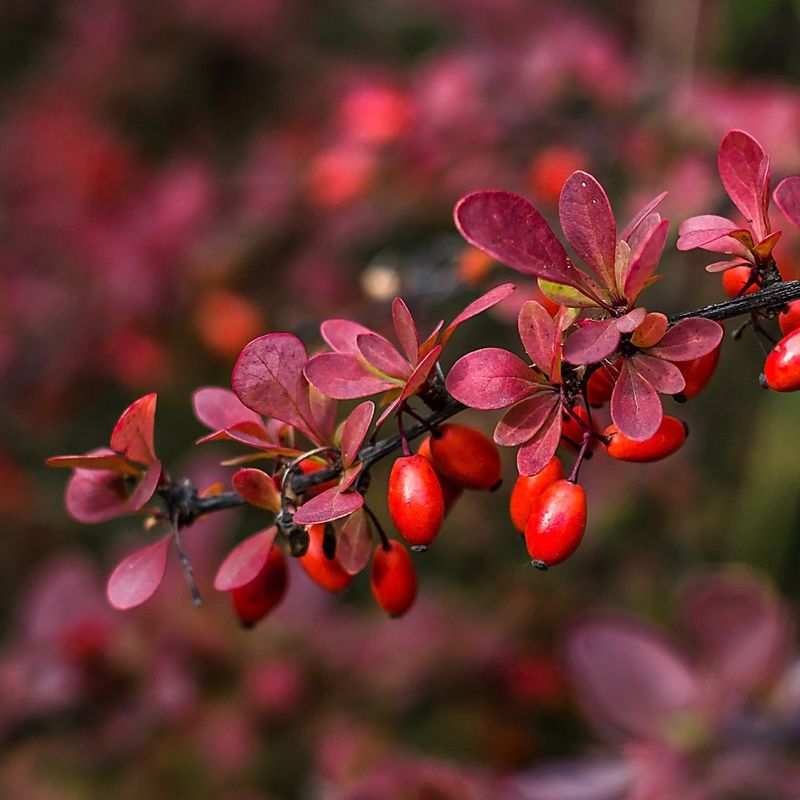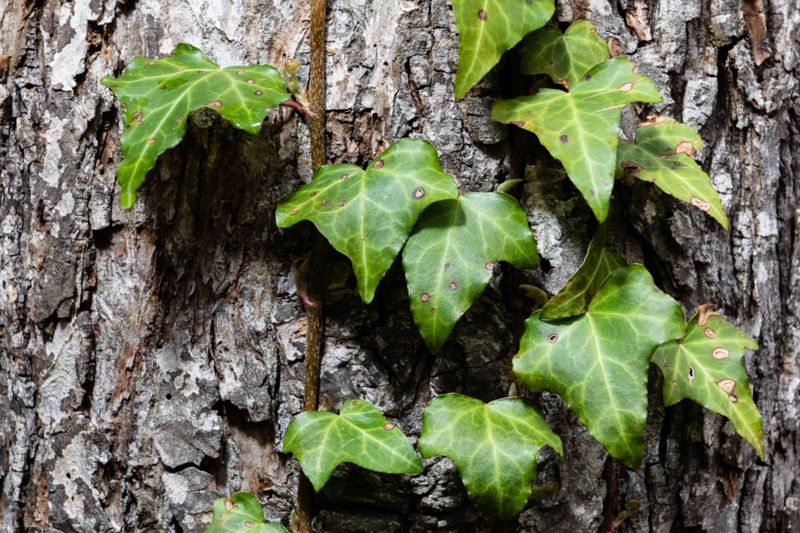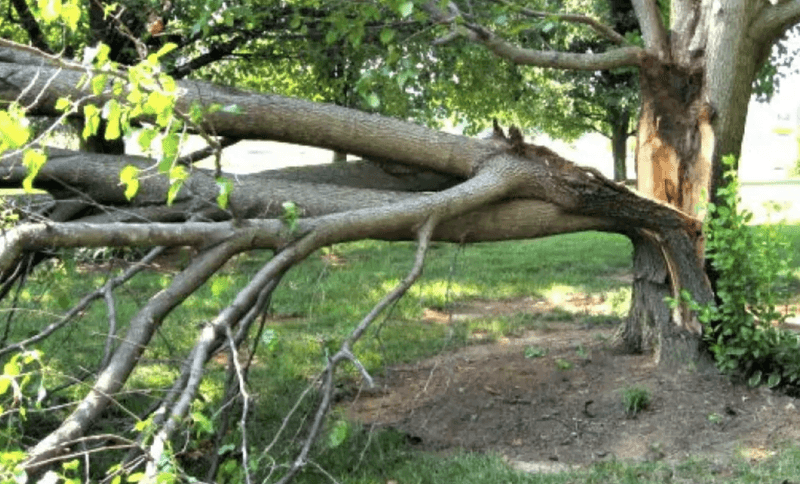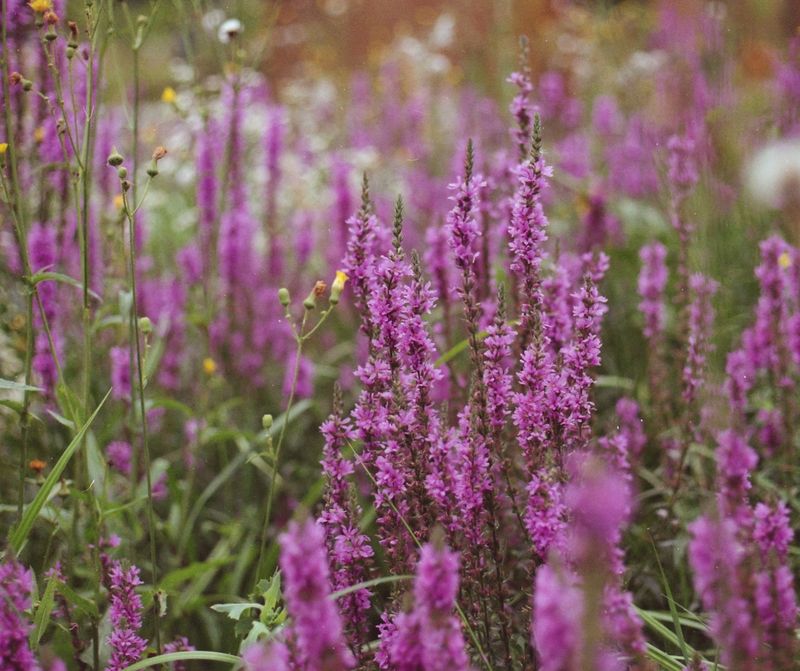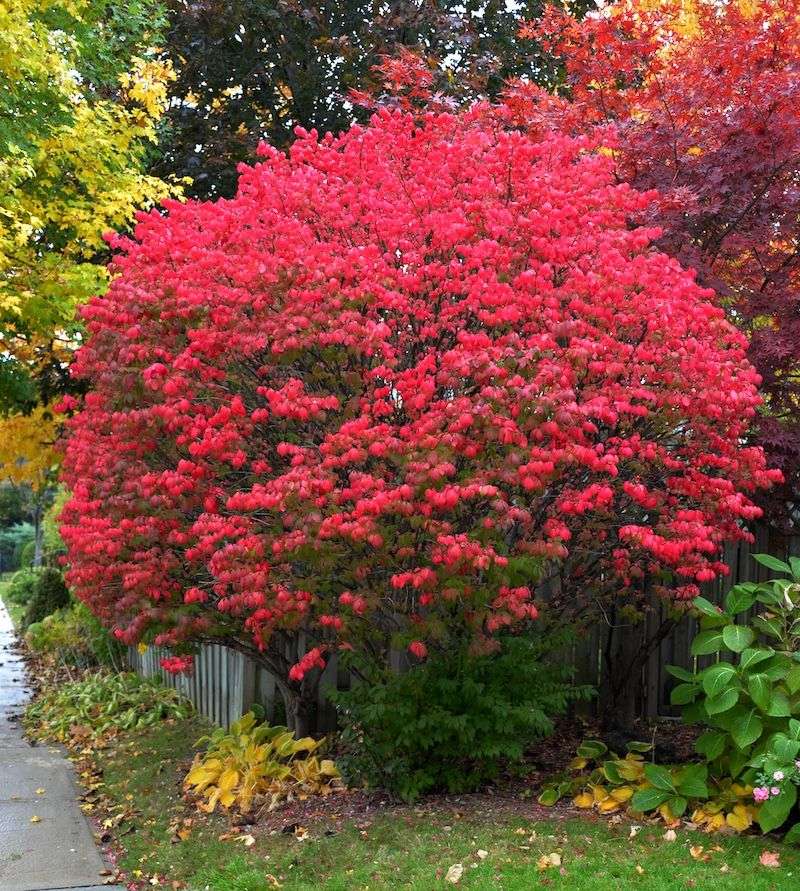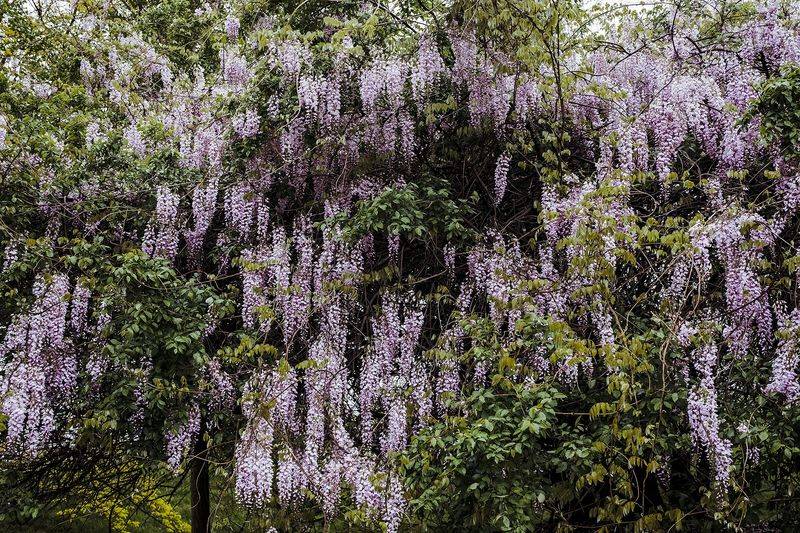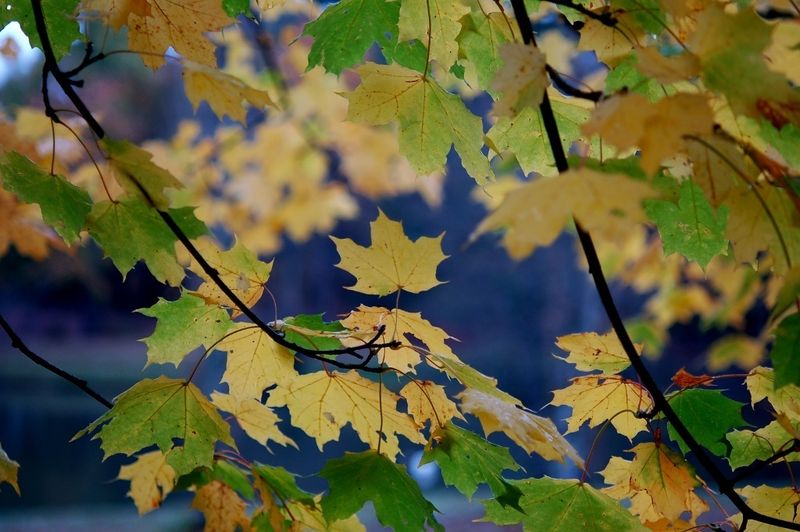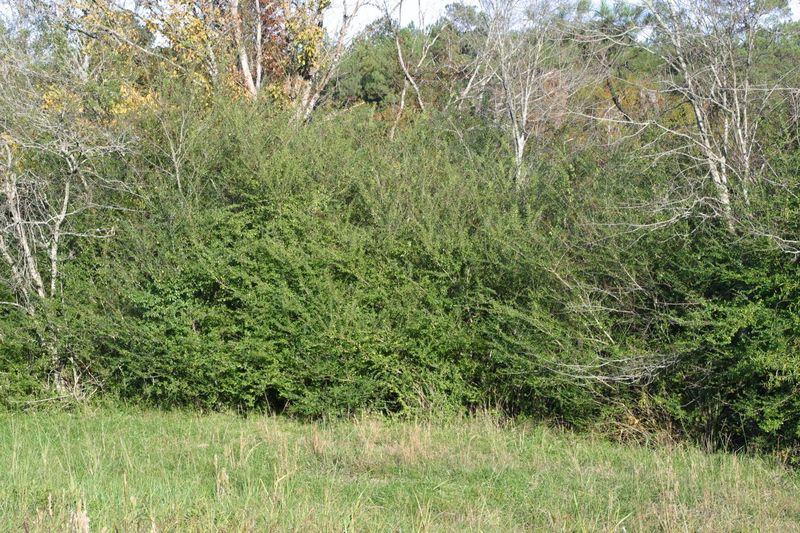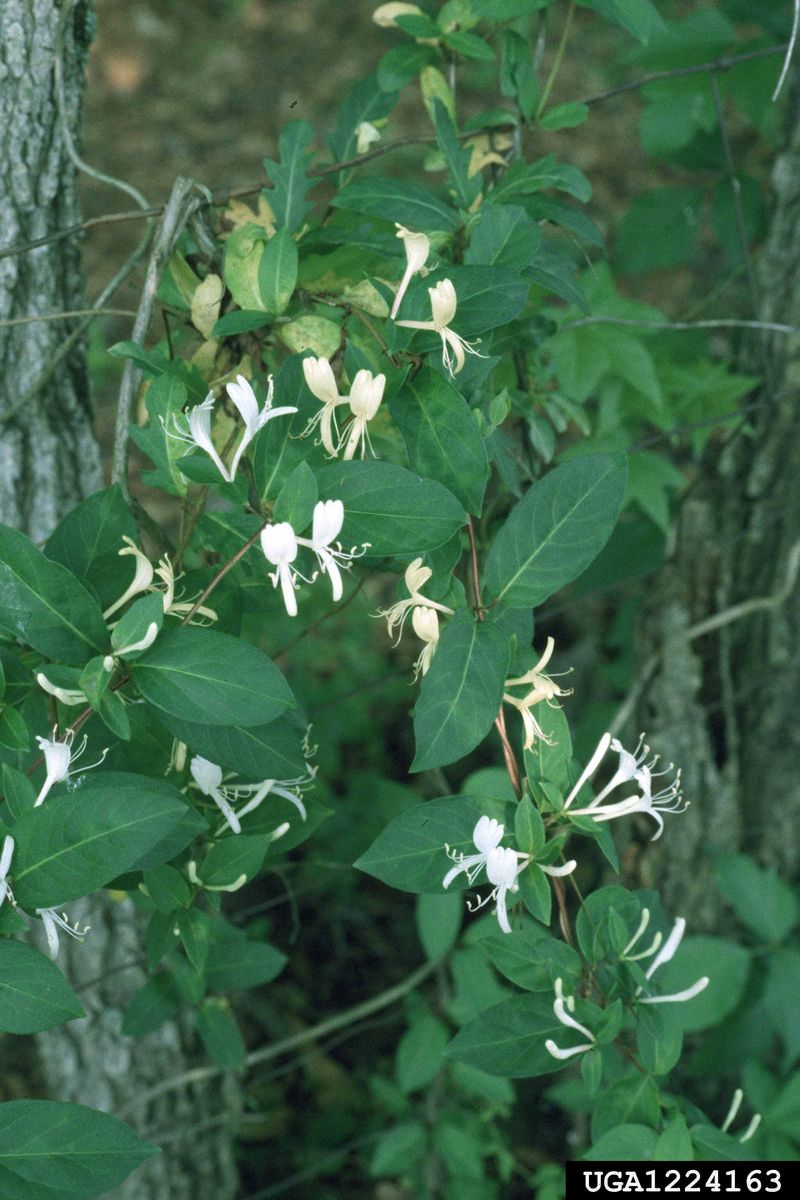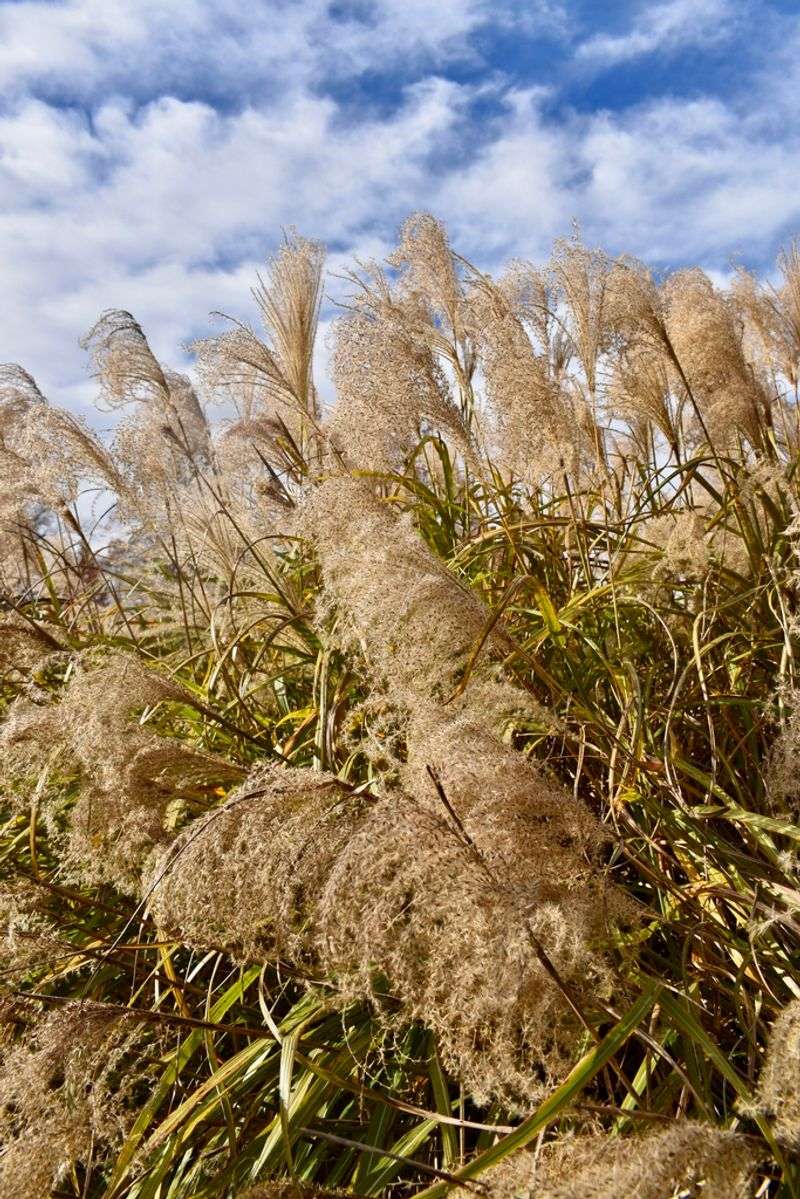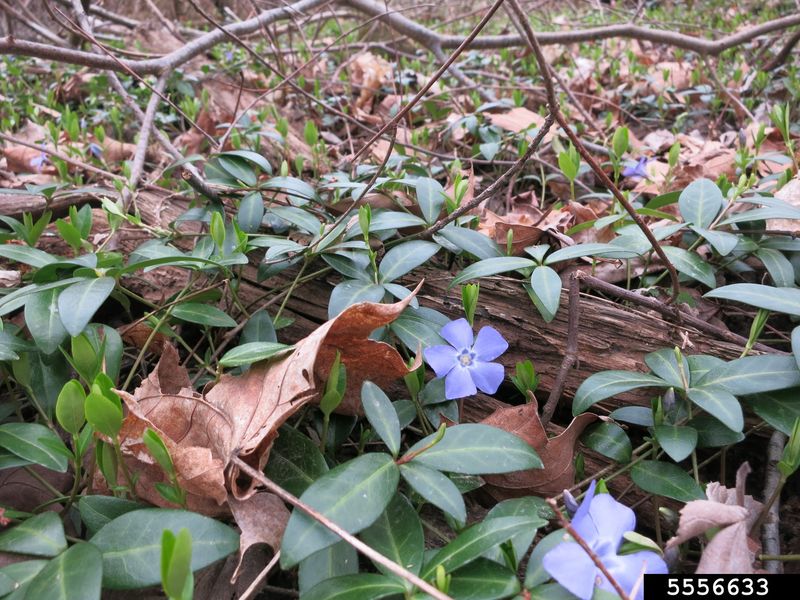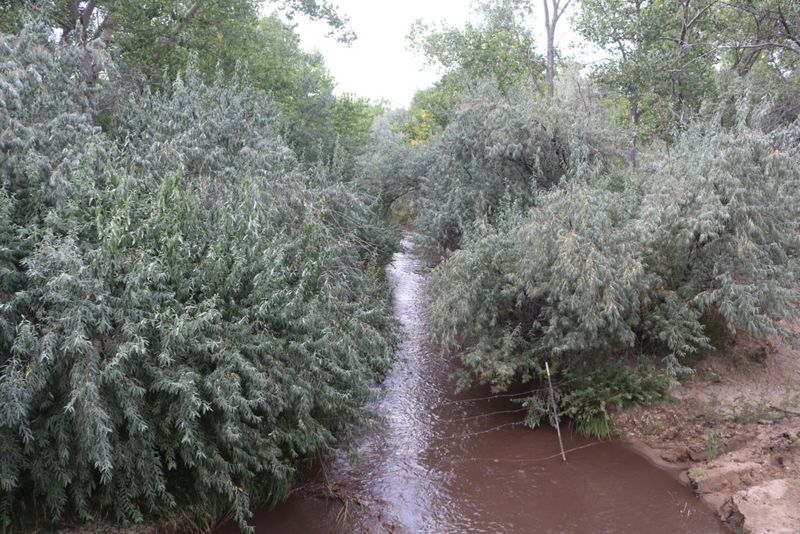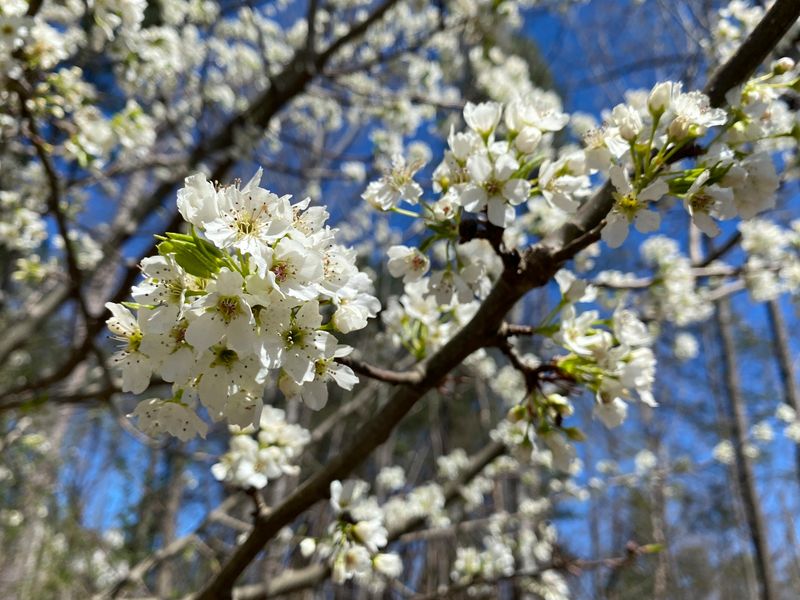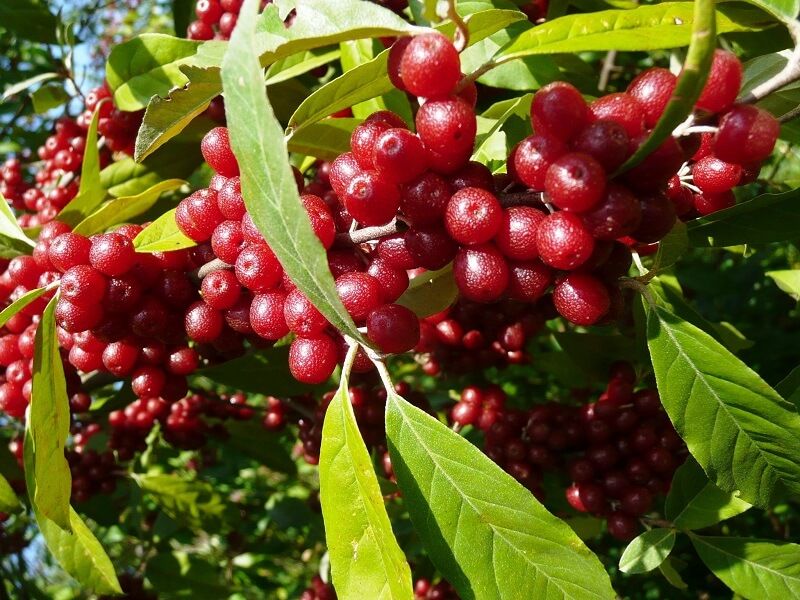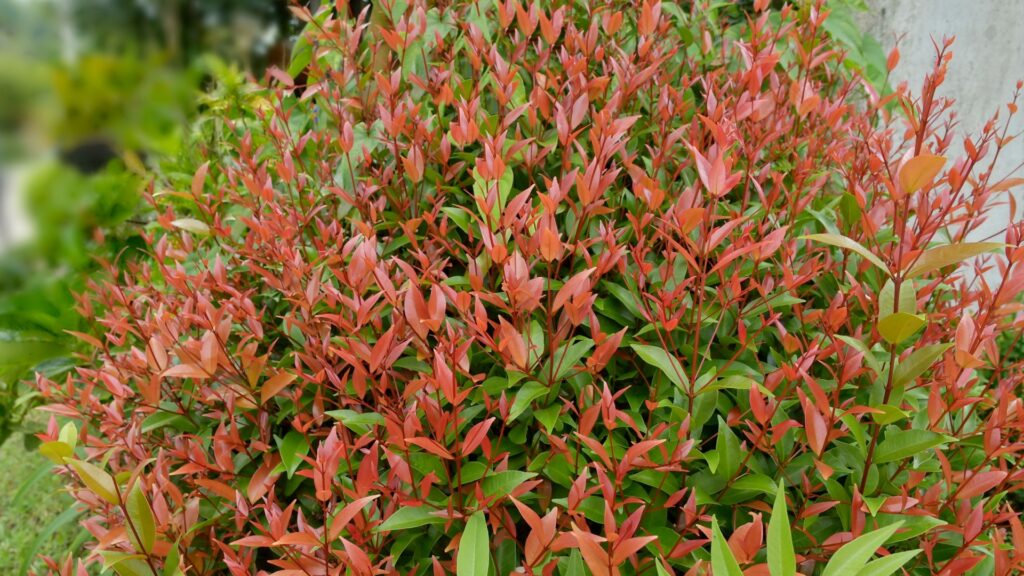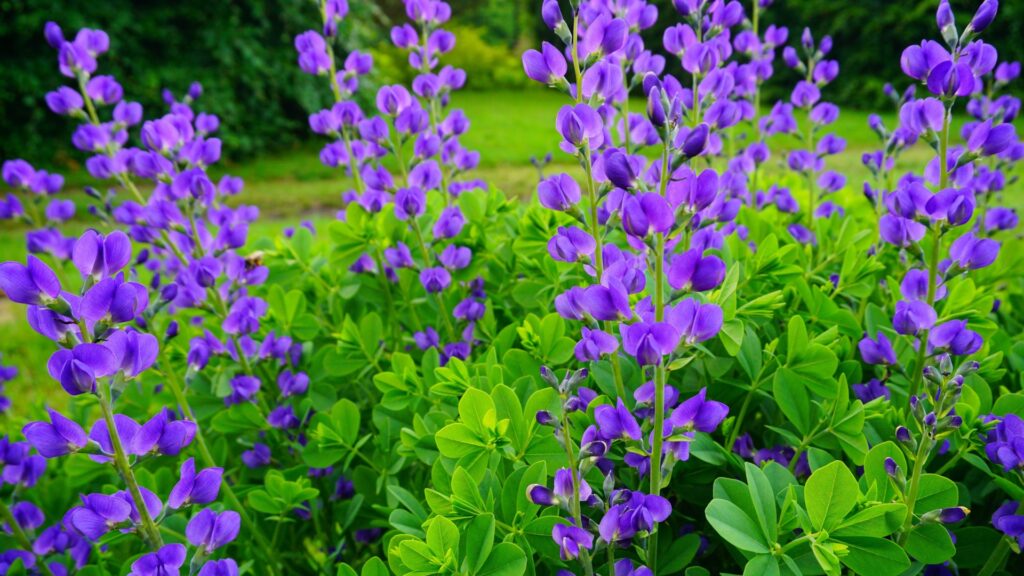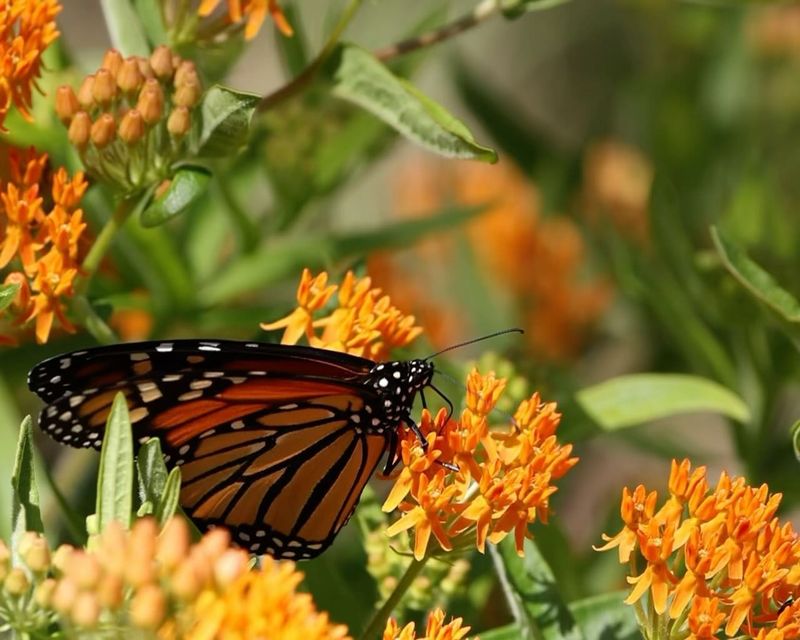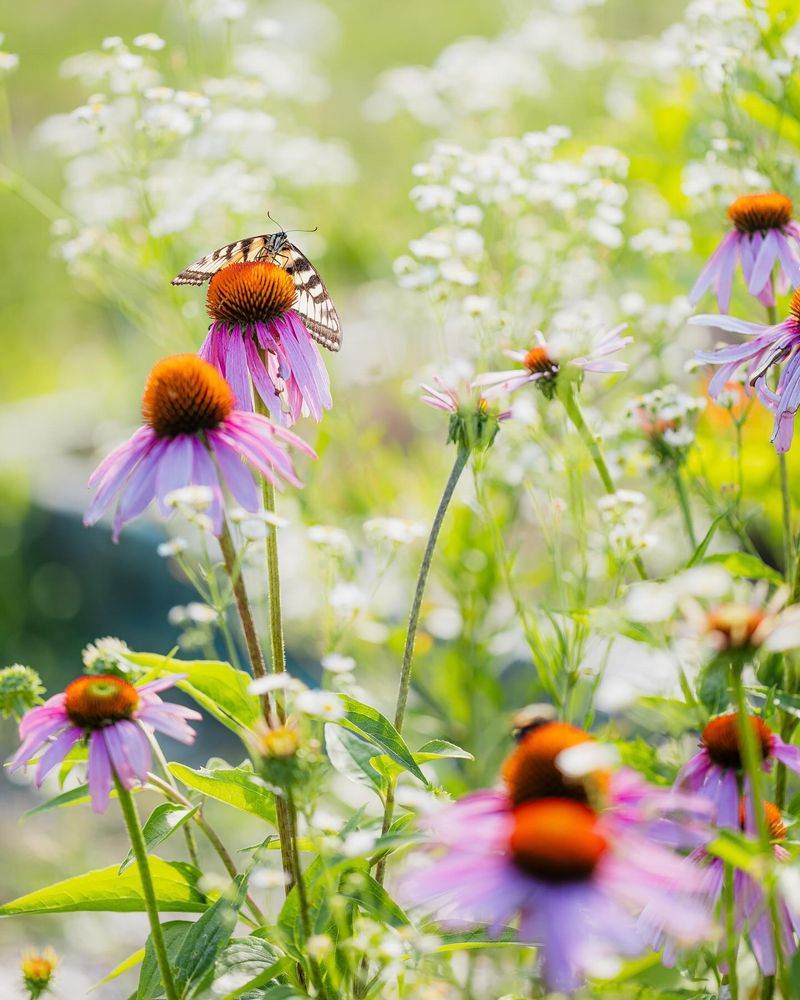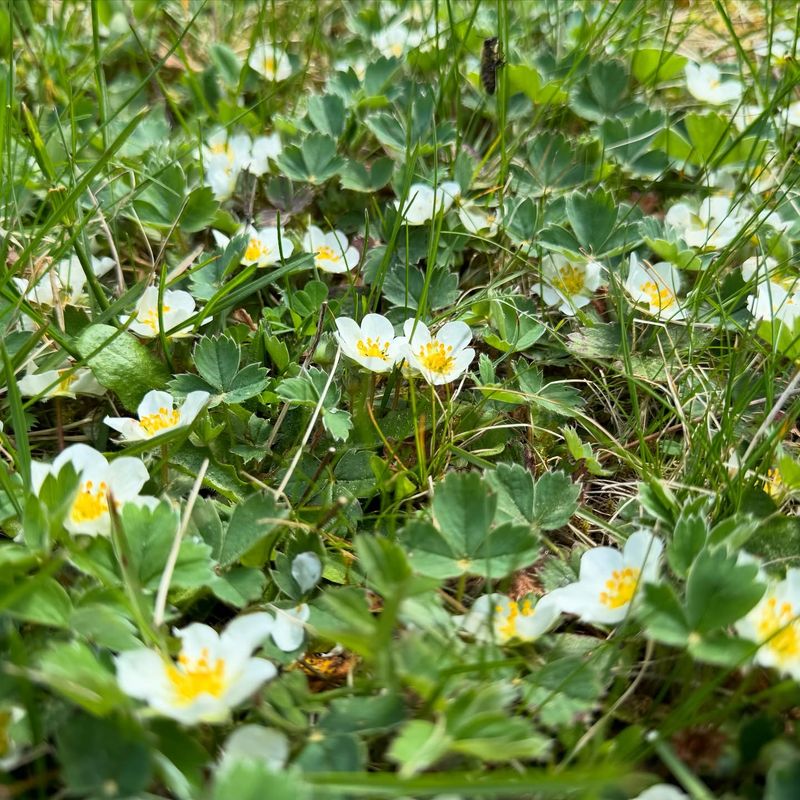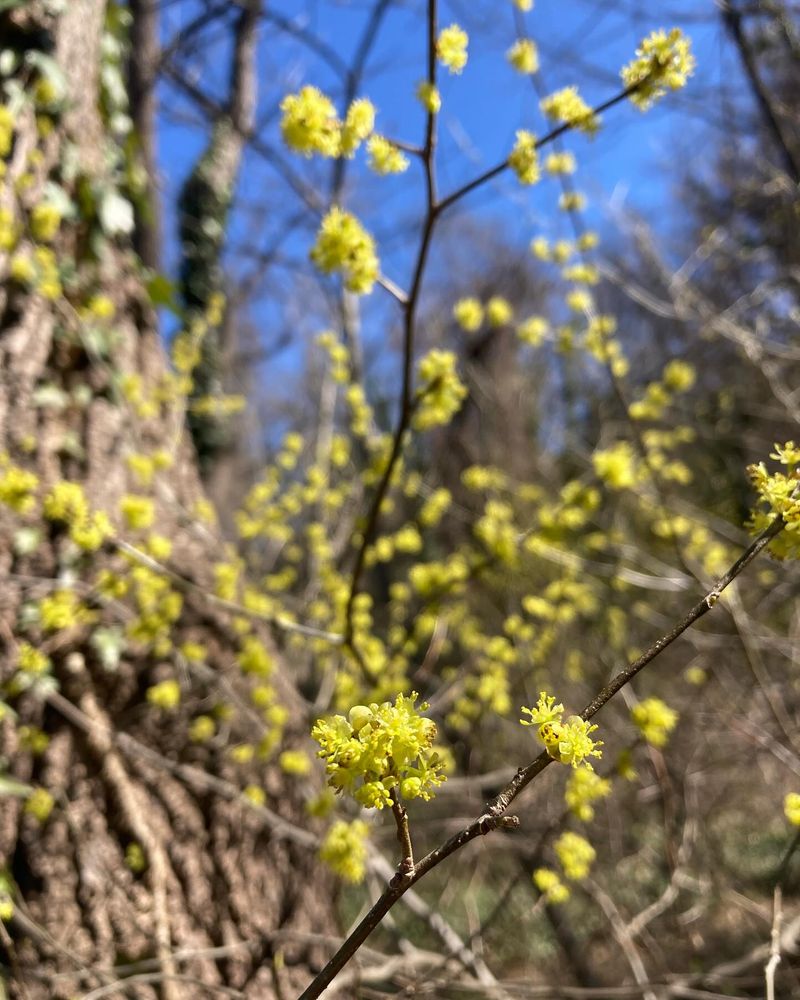Just because a plant has a “wildlife-friendly” tag doesn’t mean it’s doing your backyard (or the planet) any favors. In fact, some of the most popular garden center staples are secretly sabotaging local ecosystems—pushing out native species, spreading like wildfire, and tipping nature off balance.
Before you bring home another so-called eco-savior, take a look at these 16 plants that are doing more harm than good—and meet 6 truly beneficial picks that actually help birds, bees, and biodiversity thrive.
1. Butterfly Bush (Buddleia davidii)
Marketed as a butterfly magnet, this shrub offers nectar but provides zero habitat value for caterpillars. Adult butterflies visit for a quick sip, but their offspring starve without proper host plants.
The fast-growing bush escapes gardens with alarming speed, forming dense thickets along waterways and forest edges. In many states, it’s classified as invasive, crowding out native vegetation that wildlife truly depends on.
2. Japanese Barberry (Berberis thunbergii)
Those burgundy leaves might look striking in landscapes, but Japanese barberry creates the perfect humid microclimate for ticks that spread Lyme disease. Research shows tick populations skyrocket where this shrub grows.
Birds spread the bright red berries far and wide, creating thorny thickets that crowd out native understory plants. Many counties have banned sales entirely due to its destructive impact on forest health and public safety.
3. English Ivy (Hedera helix)
Garden centers promote English ivy as an elegant groundcover, but this aggressive vine smothers trees and creates ecological dead zones wherever it spreads. The thick mats prevent native wildflowers from emerging and provide minimal wildlife value.
The vine’s climbing habit damages tree bark and increases risk of blowdowns during storms. Even worse, birds spread the berries into natural areas where removal becomes nearly impossible without intensive management and chemical control.
4. Bradford Pear (Pyrus calleryana)
Once celebrated for spring flowers and fall color, Bradford pears have become an ecological nightmare across America. Their weak branch structure means they frequently split and break during storms, creating hazards for homes and vehicles.
Cross-pollination with other pear varieties produces viable seeds spread by birds. The resulting wild trees form impenetrable thorny thickets that crowd out native vegetation. Several states have now banned sales due to their aggressive spread and minimal wildlife value.
5. Purple Loosestrife (Lythrum salicaria)
Those gorgeous purple spikes might attract bees and butterflies, but purple loosestrife devastates wetland ecosystems. A single plant produces millions of seeds that quickly overtake native vegetation critical for waterfowl and amphibians.
What makes this plant particularly dangerous is how it alters hydrology and reduces habitat complexity in wetlands. Native cattails and sedges that provide essential nesting sites and food sources for wildlife disappear beneath its purple tide.
6. Burning Bush (Euonymus alatus)
Fall landscapes light up with burning bush’s crimson foliage, but birds spread the seeds far beyond garden boundaries. This shrub forms dense thickets in forest understories, preventing tree seedlings from establishing and reducing forest regeneration.
Studies show areas invaded by burning bush have significantly lower plant diversity and altered soil chemistry. Native alternatives like chokeberry or blueberry offer the same brilliant fall color with actual wildlife food value instead of ecological damage.
7. Chinese Wisteria (Wisteria sinensis)
Those cascading purple flowers may look dreamy, but Chinese wisteria becomes a nightmare for trees. The woody vines grow incredibly fast, strangling and eventually killing mature trees with their twining stems.
Beyond garden boundaries, escaped wisteria forms impenetrable masses that can bring down entire forest canopies. The weight of mature vines makes trees more susceptible to storm damage, while underground root systems spread aggressively, sending up new shoots yards away from the original planting.
8. Norway Maple (Acer platanoides)
Often sold as a hardy street tree, Norway maple creates deep shade that few plants can survive beneath. Its shallow roots compete aggressively with other vegetation, while its dense canopy blocks sunlight essential for spring wildflowers.
The prolific winged seeds establish readily in natural areas, gradually replacing native maples and oaks. Research shows forests invaded by Norway maple support fewer insect species, reducing food available for birds and other wildlife that depend on caterpillars to feed their young.
9. Privet (Ligustrum species)
Commonly planted as hedging, privet quickly escapes cultivation through bird-dispersed berries. The evergreen shrubs form dense thickets that shade out native understory plants and reduce habitat quality for wildlife.
Beyond ecological damage, privet pollen is highly allergenic, contributing to seasonal respiratory problems. The berries, while eaten by birds, are relatively low in nutrients compared to native alternatives, making them essentially junk food for wildlife.
10. Japanese Honeysuckle (Lonicera japonica)
Sweet-smelling flowers might attract gardeners and hummingbirds alike, but Japanese honeysuckle strangles trees and smothers entire landscapes. The fast-growing vines form dense mats that prevent forest regeneration and reduce biodiversity.
Unlike native honeysuckles, this aggressive climber remains evergreen in milder climates, giving it a competitive advantage. Its extensive root system makes control extremely difficult once established, requiring years of persistent management to eliminate from natural areas.
11. Miscanthus Grass (Miscanthus sinensis)
Garden centers promote ornamental Miscanthus for its dramatic plumes and winter interest, but those feathery seed heads contain thousands of wind-dispersed seeds. Once established in natural areas, these grasses form monocultures that crowd out native vegetation.
Their dense growth and high silica content increases fire risk and intensity. Even worse, some varieties have crossed with aggressive weedy relatives, creating new invasive hybrids that spread even more vigorously through natural areas and agricultural fields.
12. Periwinkle (Vinca minor)
Marketed as an easy groundcover for shade, periwinkle creates impenetrable mats that prevent forest regeneration. The evergreen leaves shade out spring ephemeral wildflowers that native pollinators depend on after winter.
Once established, removing periwinkle requires intensive effort due to its tough, rooting stems. While the pretty purple flowers might catch your eye, they provide minimal nectar value compared to native alternatives like wild ginger or woodland phlox.
13. Russian Olive (Elaeagnus angustifolia)
The silvery foliage might look attractive, but Russian olive aggressively invades riparian areas and open fields. Birds spread the abundant fruits, creating thorny thickets that displace native vegetation crucial for wildlife habitat.
The trees alter soil chemistry through nitrogen fixation, changing growing conditions to favor other invasive species. In western states particularly, Russian olive has transformed diverse streamside ecosystems into monocultures with reduced habitat value and altered water flow patterns.
14. Callery Pear (Pyrus calleryana)
Beyond the Bradford cultivar, all Callery pear varieties pose serious ecological threats. Their flowers contain compounds that repel native bees while attracting non-native honeybees, disrupting pollination networks that evolved over thousands of years.
The dense growth and early leafing shade out spring wildflowers before they can complete their life cycles. Thorny thickets reduce grazing land value and create barriers to wildlife movement. Several states now offer bounties for removing these trees from landscapes.
15. Autumn Olive (Elaeagnus umbellata)
Originally planted for wildlife and erosion control, autumn olive quickly escaped cultivation. The nitrogen-fixing shrub alters soil chemistry, creating conditions that favor other invasive plants while disadvantaging natives adapted to local soil conditions.
Birds spread the abundant berries, creating new infestations miles from the original plantings. The dense growth crowds out native shrubs that provide better habitat structure and more nutritious food for wildlife, despite marketing claims about its wildlife benefits.
16. Heavenly Bamboo (Nandina domestica)
With its lacy foliage and bright red berries, heavenly bamboo is a popular choice for foundation plantings and ornamental hedges. But those same berries contain cyanogenic compounds that are toxic to birds, especially cedar waxwings, which may eat them in large quantities during winter food shortages.
Beyond the toxicity issue, this evergreen shrub escapes cultivation in warmer regions, forming dense stands that crowd out native understory plants. The aggressive roots and shade-producing foliage reduce plant diversity, while offering little true habitat value for beneficial insects or nesting birds.
17. Blue Wild Indigo (Baptisia australis)
A striking native perennial, blue wild indigo offers beautiful spikes of indigo-blue flowers in late spring that attract native bees and butterflies. As a legume, it improves soil health by fixing nitrogen, making it an excellent companion in restoration or pollinator gardens.
Its clumping habit and deep taproot prevent erosion without spreading invasively. After blooming, its black seed pods add winter interest and subtle sound in the garden. Unlike showy invasives, blue wild indigo integrates seamlessly into native plantings, supporting the food web without overwhelming nearby species.
18. Native Milkweed (Asclepias species)
Unlike non-native options, local milkweed species provide essential habitat for monarch butterfly caterpillars while supporting dozens of other beneficial insects. The nectar-rich flowers attract a stunning variety of pollinators throughout the growing season.
Different species thrive in various conditions – swamp milkweed for wet areas, butterfly weed for dry spots. Their deep root systems improve soil health and water infiltration. Best of all, these beautiful plants stay exactly where you plant them without becoming invasive nightmares.
19. Serviceberry (Amelanchier species)
Beautiful spring flowers, summer berries, and brilliant fall color make serviceberry a true four-season wildlife powerhouse. Birds devour the sweet fruits while dozens of butterfly and moth species use the leaves as caterpillar food.
Unlike invasive flowering trees, serviceberry integrates perfectly into local ecosystems. The multi-stemmed growth provides excellent nesting habitat for songbirds. Different native varieties thrive across North America, making it easy to find one perfectly adapted to your local conditions.
20. Purple Coneflower (Echinacea purpurea)
This prairie native delivers major wildlife benefits without invasive tendencies. The showy purple flowers attract butterflies and bees throughout summer, while the seed heads provide winter food for goldfinches and other birds.
Coneflowers self-seed gently without becoming aggressive, creating sustainable colonies that suppress weeds naturally. Their deep roots improve soil structure and drought resistance. As a bonus, these tough perennials require minimal maintenance once established, thriving in poor soils where many invasives would struggle.
21. Wild Strawberry (Fragaria virginiana)
Forget invasive groundcovers – native wild strawberry provides excellent erosion control while producing sweet berries for wildlife and humans alike. The white spring flowers support early-season pollinators when food sources are scarce.
Unlike aggressive exotic plants, wild strawberry plays well with neighbors, allowing spring ephemerals to emerge through its low-growing foliage. The plants spread by runners but remain manageable, creating living mulch that suppresses weeds while providing habitat for beneficial ground beetles and other helpful insects.
22. Spicebush (Lindera benzoin)
Early spring flowers on this native shrub provide crucial nectar for emerging pollinators, while the aromatic foliage hosts spicebush swallowtail butterfly caterpillars. Female plants produce bright red berries that migrating birds depend on for high-energy food.
Unlike invasive shrubs, spicebush grows at a moderate pace and stays within its bounds. The fall foliage turns brilliant yellow, rivaling any ornamental for seasonal color. Best of all, deer typically avoid browsing it, making it perfect for woodland gardens where pest pressure is high.

